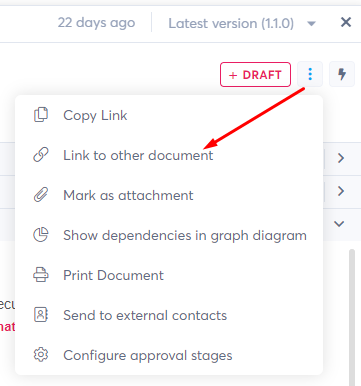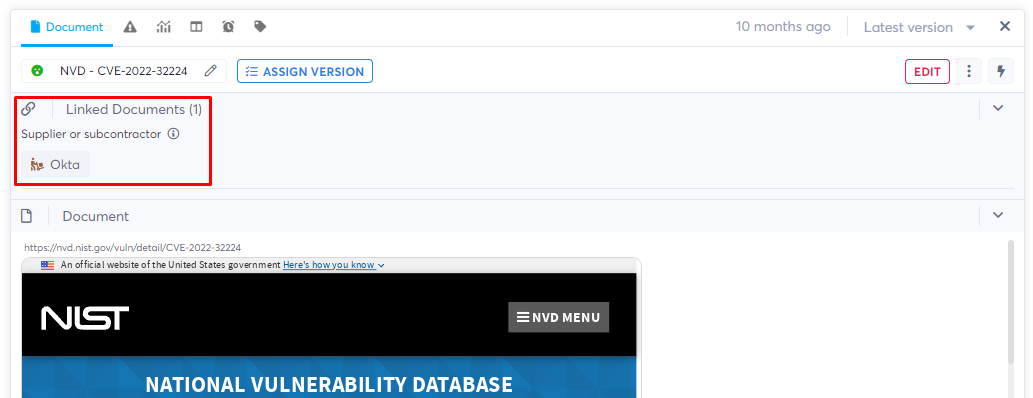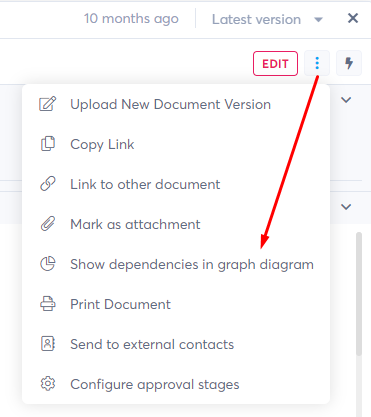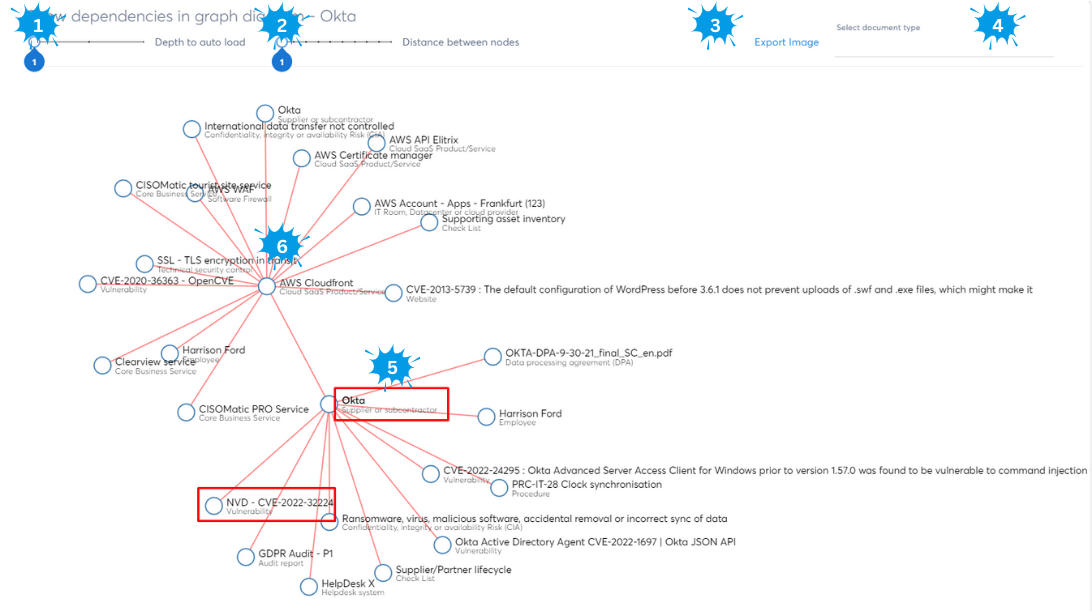
Dependency tracking
Because everything is a document inside Brainframe, you are fully flexible to create dependencies between anything that makes sense (e.g. asset to risks/assessments, risks to vulnerabilities, policies to procedures, contacts to suppliers, ...)
Some document types already come with predefined "linkable" document types configured during their creation (e.g. CIA risks will expect assets to be linked). Simply type an existing document's name, or create one in the current folder based on the provided name.

Once the document is created, you can also add/modify links using the link icon in the folder content view or document view


These dependencies will from then on show in both documents under "Linked documents" area. Here an example of a vulnerability linked to Okta supplier:

Which will also be visible from the Okta document

INFO
To get a visual representation of documents linked to the current document (dependencies), you can select the "Show dependencies in graph diagram"


- Configures how deep of dependencies you want to visualize (e.g. set to 2 if you want to also auto load dependencies of first linked documents)
- Allows you to define the distance between the visual nodes
- Allows you to export the current graph as an image
- Here you can to filter to show only specific document types to be visualized (e.g. only policies and procedures)
- The current document "Okta" with it's dependencies (e.g. NVD - CVE-2022-32224 shown previously)
- When clicking on any of the connected nodes, we can drill down other relations (e.g. here we show all AWS Cloudfront dependencies)